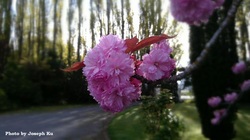Celebrating Arbor Day in New Zealand
Arbor Day is a cherished celebration in New Zealand, dedicated to the planting and nurturing of trees. This special day reflects the nation's commitment to environmental stewardship, community involvement, and the preservation of natural heritage.
Greening Your Space
In the verdant of countryside landscapes of New Zealand, trees play a pivotal role in enhancing the beauty and biodiversity of any garden. It's essential to consider certain factors and to understand how to care for your trees.
Essential Care Tips for New Zealand’s Autumn Season
As autumn settles in New Zealand, the changing foliage and cooler temperatures signal a shift in the needs of our trees. May marks a critical time for tree care, as preparations are made to ensure their health and resilience through the winter months.
Gardener vs. Arborist
In the realm of horticulture and tree care, the roles of a gardener and an arborist may seem interchangeable at first glance. However, upon closer examination, distinct differences emerge between these two professions.
Beaver Tree Service Autumn Newsletter
Welcome to the Beaver Tree Service Autumn Newsletter! Bringing you the latest news, tips and general busy Beaver updates.
Exploring the Tree Canopy
Nestled along the picturesque Kapiti Coast lies the vibrant community of Kapiti. With its lush greenery, diverse ecosystems, and strong community spirit, Kapiti offers a unique and rewarding environment for arborists to ply their trade.
Tree Care Tips
We’ve compiled these articles so that you too, can benefit from the experience and knowledge that our arborists and skilled tree techs have. We are committed to our customers and desire that you enjoy and value your tree’s as much as we do.
Giving back to the community in various ways is yet another one of our key focuses.
 Spring is the perfect time to prune your ornamental trees, the sap has stopped rising, most trees are finishing flowering & leaves have developed. Trees are actively growing so any cuts are going to heal well. Trees are less prone to disease or infections due to the above reasons when pruned at this time of year. So for healthier trees & more sun during those evening BBQ’s & entertaining prune at the right time. If you need help or would prefer an expert arborist to do this for you please give us a CALL NOW on 344-6223 for your FREE Spring Tree Appraisal.
Spring is the perfect time to prune your ornamental trees, the sap has stopped rising, most trees are finishing flowering & leaves have developed. Trees are actively growing so any cuts are going to heal well. Trees are less prone to disease or infections due to the above reasons when pruned at this time of year. So for healthier trees & more sun during those evening BBQ’s & entertaining prune at the right time. If you need help or would prefer an expert arborist to do this for you please give us a CALL NOW on 344-6223 for your FREE Spring Tree Appraisal.